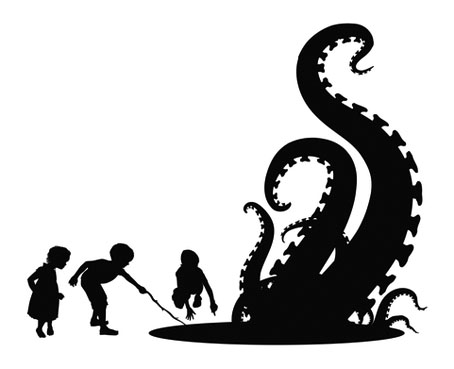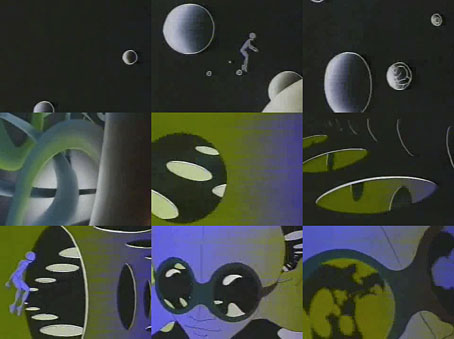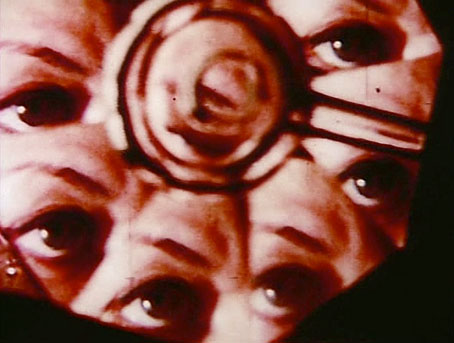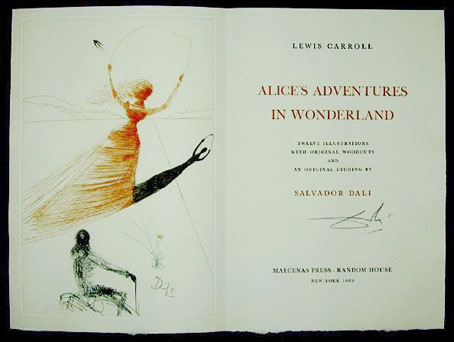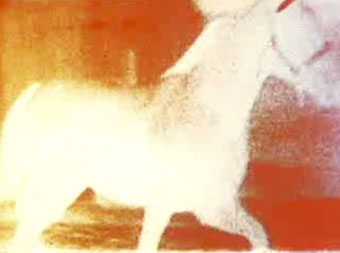
Two experimental films by British filmmakers. Berlin Horse (1970) at Ubuweb is a hypnotic piece of minimalism by Malcolm Le Grice who subjects found footage of exercising horses to a series of loopings and filterings that push the degraded images to a point of textured abstraction. Of note with this film is the equally minimal and repetitive score, a piano loop created by Brian Eno. This was before he gained prominence as a member of Roxy Music but the slight piece of experimentation points the way to his post-Roxy career and his ambient investigations. Berlin Horse is available on DVD from Lux, with a selection of Le Grice’s other shorts.
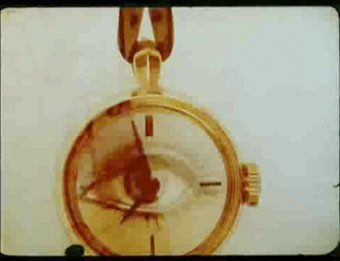
Marvo Movie (1967) at Europa Film Treasures is a typically frenetic work by Jeff Keen, four minutes of heavily cut-up sound and vision with collage, animation and multiple exposures throughout. Despite the year of its creation, the effect is less psychedelic and more like an amphetamine rush.
• Malcolm Le Grice at YouTube
• Jeff Keen at YouTube

